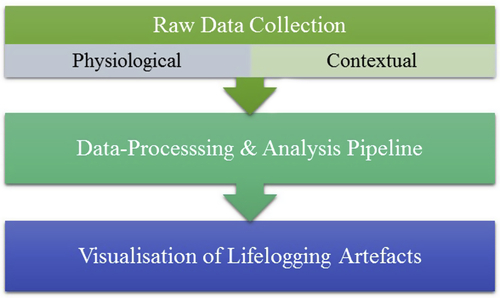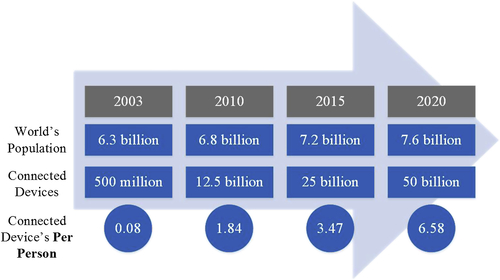[1] Voeffray C. Emotion-sensitive Human-Computer Interaction (HCI): State of the art - Seminar paper. Emotion Recognition. 2011:1–4.
[2] Hollis V, Konrad A, Whittaker S. Change of Heart: Emotion Tracking to Promote Behavior Change. In: Proceedings of the SIGCHI Conference on Human Factors in Computing Systems (CHI 2015). 2015.
[3] Suls J. Anger and the Heart: Perspectives on Cardiac Risk, Mechanisms and Interventions. Prog Cardiovasc Dis. 2013;55(6):538–547.
[4] Samuels M.A. The Brain-Heart Connection. Circulation. 2007;116(1):77–84.
[5] Sesso H.D, Buring J.E, Rifai N, Blake G.J, Gaziano J.M, Ridker P.M. C-Reactive Protein and the Risk of Developing Hypertension. J Am Med Assoc. Dec. 2003;290(22):2945–2951.
[6] Williams J.E, Paton C.C, Siegler I.C, Eigenbrodt M.L, Nieto F.J, Tyroler H.A. Anger proneness predicts coronary heart disease risk: prospective analysis from the atherosclerosis risk in communities (ARIC) study. Circulation. 2000;101(17):2034–2039.
[7] Kop W.J, Verdino R.J, Gottdiener J.S, O’Leary S.T, Bairey Merz C.N, Krantz D.S. Changes in Heart Rate and Heart Rate Variability Before Ambulatory Ischemic Events. J Am Coll Cardiol. 2001;38(3):742–749.
[8] Lane R.D, Laukes C, Marcus F.I, et al. Psychological Stress Preceding Idiopathic Ventricular Fibrillation. Psychosom Med. 2005;67(3):359–365.
[9] Strike P.C, Steptoe A. Behavioral and Emotional Triggers of Acute Coronary Syndromes: A Systematic Review and Critique. Psychosom Med. 2005;67(2):179–186.
[10] O’Donovan A, Neylan T.C, Metzler T, Cohen B.E. Lifetime exposure to traumatic psychological stress is associated with elevated inflammation in the Heart and Soul Study. Brain Behav Immun. 2012;26(4):642–649.
[11] Ganzel B.L, Morris P.A, Wethington E. Allostasis and the human brain: Integrating models of stress from the social and life sciences. Psychol Rev. 2010;117(1):134–174.
[12] McEwen B.S. Physiology and Neurobiology of Stress and Adaptation: Central Role of the Brain. Physiol Rev. 2007;87:873–904.
[13] Brosschot J.F. Markers of chronic stress: Prolonged physiological activation and (un)conscious perseverative cognition. Neurosci Biobehav Rev. 2010;35(1):46–50.
[14] World Health Organization. Global status report on noncommunicable diseases 2010. 2011.
[15] Townsend N, Wickramasinghe K, Bhatnagar P, Smolina K, Nichols M, Leal J, et al. Coronary Heart Disease Statistics 2012. In: British Heart Foundation. 18th ed. 2012:1–211.
[16] World Health Organization. Prevention of Cardiovascular Disease: Guidelines for assessment and management of cardiovascular risk. 2007.
[17] Go A.S, Mozaffarian D, Roger V.L, Benjamin E.J, Berry J.D, Blaha M.J, et al. Heart Disease and Stroke Statistics—2014 Update: A Report From the American Heart Association. Jan. 2014.
[18] British Heart Foundation. Modelling the UK burden of Cardiovascular Disease to 2020: A Research Report for the Cardio & Vascular Coalition and the British Heart Foundation. 2008.
[19] Nichols M, Townsend N, Scarborough P, Rayner M, Leal J, Luengo-Fernandez R, et al. European Cardiovascular Disease Statistics 2012. In: European Heart Network. 4th ed. 2012:1–129.
[20] Centers for Disease Control and Prevention (CDC). Heart Disease Facts and Statistics. 2014. Available: http://www.cdc.gov/heartdisease/statistics.htm (accessed: 13-Jan-2015).
[21] Charlson F.J, Stapelberg N.J, Baxter A.J, Whiteford H.A. Should Global Burden of Disease Estimates Include Depression as a Risk Factor for Coronary Heart Disease? BMC Med. 2011;9(1):47.
[22] Everson S.A, Goldberg D.E, Kaplan G.A, Julkunen J, Salonen J.T. Anger Expression and Incident Hypertension. Psychosom Med. 1998;60(6):730–735.
[23] Janszky I, Ahnve S, Lundberg I, Hemmingsson T. Early-Onset Depression, Anxiety, and Risk of Subsequent Coronary Heart Disease : 37-Year Follow-Up of 49,321 Young Swedish Men. J Am Coll Cardiol. 2010;56(1):31–37.
[24] McEwen B.S. Protective and Damaging Effects of Stress Mediators. N Engl J Med. 1998;338(3):171–179.
[25] Karlamangla A.S, Singer B.H, Seeman T.E. Reduction in Allostatic Load in Older Adults Is Associated With Lower All-Cause Mortality Risk: MacArthur Studies of Successful Aging. Psychosom Med. 2006;68(3):500–507.
[26] Sirois B.C, Burg M.M. Negative Emotion and Coronary Heart Disease: A Review. Behav Modif. 2003;27(1):83–102.
[27] Elderon L, Whooley M.A. Depression and Cardiovascular Disease. Prog Cardiovasc Dis. 2013;55(6):511–523.
[28] McEwen B.S. Physiology and Neurobiology of Stress and Adaptation: Central Role of the Brain. Physiol Rev. 2007;87(3):873–904.
[29] Haukkala A, Konttinen H, Laatikainen T, Kawachi I, Uutela A. Hostility, Anger Control, and Anger Expression as Predictors of Cardiovascular Disease. Psychosom Med. 2010;72(6):556–562.
[30] Roest A.M, Martens E.J, de Jonge P, Denollet J. Anxiety and Risk of Incident Coronary Heart Disease: A Meta-Analysis. J Am Coll Cardiol. 2010;56(1):38–46.
[31] Player M.S, Peterson L.E. Anxiety Disorders, Hypertension, and Cardiovascular Risk: A Review. Int J Psychiatry Med. 2011;41(4):365–377.
[32] Thurston R.C, Rewak M, Kubzansky L.D. An Anxious Heart: Anxiety and the Onset of Cardiovascular Diseases. Prog Cardiovasc Dis. 2013;55(6):524–537.
[33] Suls J, Bunde J. Anger, Anxiety, and Depression as Risk Factors for Cardiovascular Disease: The Problems and Implications of Overlapping Affective Dispositions. Psychol Bull. 2005;131(2):260–300.
[34] Camacho A. Is anxious-depression an inflammatory state? Med Hypotheses. 2013;81(4):577–581.
[35] Kubzansky L.D, Cole S.R, Kawachi I, Vokonas P, Sparrow D. Shared and unique contributions of anger, anxiety, and depression to coronary heart disease: a prospective study in the normative aging study. Ann Behav Med. 2006;31(1):21–29.
[36] Kop W.J. The integration of cardiovascular behavioral medicine and psychoneuroimmunology: New developments based on converging research fields. Brain Behav Immun. 2003;17(4):233–237.
[37] Brosschot J.F. Markers of chronic stress: Prolonged physiological activation and (un)conscious perseverative cognition. Neurosci Biobehav Rev. 2010;35(1):46–50.
[38] United Nations. World population to 2300. 2004.
[39] National Institute on Aging. National Institutes of Health, U.S. Department of Health and Human Services, and World Health Organization. Global Health and Aging. 2011.
[40] The International Longevity Centre UK. The Economic Value of Healthy Ageing and Working Longer Notes based on the ILC-UK and Actuarial Profession joint debates Supported by Prudential. 2010.
[41] Atzori L, Iera A, Morabito G. The Internet of Things: A survey. Comput Networks. 2010;54(15):2787–2805.
[42] Evans D. The Internet of Things: How the Next Evolution of the Internet Is Changing Everything. 2011.
[43] Bradley J, Barbier J, Handler D. Embracing the Internet of Everything To Capture Your Share of $ 14.4 Trillion. 2013.
[44] Fairclough S.H, van der Zwaag M, Spiridon E, Westerink J. Effects of mood induction via music on cardiovascular measures of negative emotion during simulated driving. Physiol Behav. 2014;129:173–180.
[45] Bush V. As We May Think. The Atlantic MonthlyJULY. 1945.
[46] Mann S. Wearable Computing: A First Step Toward Personal Imaging. Computer. 1997;30(2):25–32.
[47] Mann S, Fung J, Aimone C, Sehgal A, Chen D. Designing EyeTap Digital Eyeglasses for Continuous Lifelong Capture and Sharing of Personal Experiences. In: Proceedings of CHI 2005 Conference on Human Factors in Computer Systems. 2005.
[48] Hodges S, Williams L, Berry E, Izadi S, Srinivasan J, Butler A, et al. SenseCam: A Retrospective Memory Aid. UbiComp 2006 Ubiquitous Comput. 2006;4206:177–193.
[49] Hamm J, Stone B, Belkin M, Dennis S. Automatic Annotation of Daily Activity from Smartphone-based Multisensory Streams. In: Mobile Computing, Applications, and Services. 2013:328–342.
[50] Doherty A.R, Pauly-Takacs K, Caprani N, Gurrin C, Moulin C.J.A, O’Connor N.E, et al. Experiences of Aiding Autobiographical Memory Using the SenseCam. Hum Comput Interact. 2012;27(1-2):151–174.
[51] Hernandez J, McDuff D, Fletcher R, Picard R.W. Inside-Out: Reflecting on your Inner State. In: 2013 IEEE International Conference on Pervasive Computing and Communications Workshops (PERCOM Workshops). 2013:324–327.
[52] Doherty A.R, Caprani N, Conaire C.Ó, Kalnikaite V, Gurrin C, Smeaton A.F, et al. Passively Recognising Human Activities Through Lifelogging. Comput Human Behav. 2011;27(5):1948–1958.
[53] Ivonin L, Chang H.-M, Chen W, Rauterberg M. Unconscious emotions: quantifying and logging something we are not aware of. Pers Ubiquitous Comput. 2012;17(4):663–673.
[54] van den Broek E.L, Janssen J.H, Westerink J.H.D.M. Guidelines for Affective Signal Processing (ASP): from lab to life. In: 3rd International Conference on Affective Computing & Intelligent Interaction, ACII 2009, 10–12 Sept 2009, Amsterdam, The Netherlands. 2009.
[55] McDuff D, Karlson A, Kapoor A, Roseway A, Czerwinski M. AffectAura: An Intelligent System for Emotional Memory. In: Proceedings of the 2012 ACM annual conference on Human Factors in Computing Systems - CHI ’12. 2012:849–858.
[56] Pantelopoulos A, Bourbakis N.G. A Survey on Wearable Sensor-Based Systems for Health Monitoring and Prognosis. IEEE Trans Syst Man Cybern C Appl Rev. 2010;40(1):1–12.
[57] Lindström M, Ståhl A, Höök K, Sundström P, Laaksolathi J, Combetto M, et al. Affective Diary – Designing for Bodily Expressiveness and Self-Reflection. In: CHI ’06 extended abstracts on Human factors in computing systems. 2006:1037–1042.
[58] Ståhl A, Höök K, Svensson M, Taylor A.S, Combetto M. Experiencing the Affective Diary. Pers Ubiquitous Comput. 2009;13(5):365–378.
[59] Machajdik J, Hanbury A, Garz A, Sablatnig R. Affective Computing for Wearable Diary and Lifelogging Systems: An Overview. In: 35th Annual Workshop of the Austrian Association for Pattern Recognition (OAGM/AAPR). 2011.
[60] Cambria E, Hupont I, Hussain A, Cerezo E, Baldassarri S. Sentic Avatar: Multimodal Affective Conversational Agent with Common Sense. Towar. Auton. Adapt. Context. Multimodal Interfaces. Theor Pract. 2011(Issues 6456):81–95.
[61] Li I, Dey A.K, Forlizzi J. Using Context to Reveal Factors that Affect Physical Activity. ACM Trans Comput Interact. Mar. 2012;19(1):1–21.
[62] Consolvo S, McDonald D.W, Toscos T, Chen M.Y, Froehlich J, Harrison B, Klasnja P, LaMarca A, LeGrand L, Libby R, Smith I, Landay J.A. Activity Sensing in the Wild: A Field Trial of UbiFit Garden. In: Proceeding of the Twenty-Sixth Annual CHI Conference on Human Factors in Computing Systems - CHI ’08. 2008:1797–1806.
[63] Lin J.J, Mamykina L, Lindtner S, Delajoux G, Strub H.B. Fish’n’Steps: Encouraging Physical Activity with an Interactive Computer Game. UbiComp 2006: Ubiquitous Computing. 2006:261–278.
[64] Gouveia R, Karapanos E. Footprint Tracker: Supporting Diary Studies with Lifelogging. In: Proceedings of the SIGCHI Conference on Human Factors in Computing Systems - CHI ’13. 2013:2921–2930.
[65] Konrad A, Bellotti V, Crenshaw N, Tucker S, Nelson L, Du H, et al. Finding the Adaptive Sweet Spot: Balancing Compliance and Achievement in Automated Stress Reduction. In: Proceedings of the SIGCHI Conference on Human Factors in Computing Systems (CHI 2015). 2015.
[66] Carroll E.A, Czerwinski M, Roseway A, Kapoor A, Johns P, Rowan K, et al. Food and Mood: Just-in-Time Support for Emotional Eating. In: 2013 Humaine Association Conference on Affective Computing and Intelligent Interaction. 2013:252–257.
[67] Li I, Dey A, Forlizzi J, Höök K, Medynskiy Y. Personal Informatics and HCI: Design, Theory, and Social Implications. In: Proceedings of the 2011 Annual Conference Extended Abstracts on Human Factors In Computing Systems - CHI EA ’11. 2011:2417–2420.
[68] Haensel A, Mills P.J, Nelesen R.A, Ziegler M.G, Dimsdale J.E. The relationship between heart rate variability and inflammatory markers in cardiovascular diseases. Psychoneuroendocrinology. 2008;33(10):1305–1312.
[69] Lampert R, Bremner J.D, Su S, Miller A, Lee F, Cheema F, et al. Decreased heart rate variability is associated with higher levels of inflammation in middle-aged men. Am Heart J. 2008;156(4):759 e1-7.
[70] Kemp A.H, Quintana D.S. The relationship between mental and physical health: Insights from the study of heart rate variability. Int J Psychophysiol. 2013;89(3):288–296.
[71] Koivistoinen T, Virtanen M, Hutri-Kähönen N, Lehtimäki T, Jula A, Juonala M, et al. Arterial pulse wave velocity in relation to carotid intima-media thickness, brachial flow-mediated dilation and carotid artery distensibility: The Cardiovascular Risk in Young Finns Study and the Health 2000 Survey. Atherosclerosis. 2012;220(2):387–393.
[72] Patel S, Park H, Bonato P, Chan L, Rodgers M. A review of wearable sensors and systems with application in rehabilitation. J Neuroeng Rehabil. 2012;9(1):21.
[73] Hernandez J, Li Y, Rehg J.M, Picard R.W. BioGlass: Physiological Parameter Estimation Using a Head-Mounted Wearable Device. In: EAI 4th International Conference on Wireless Mobile Communication and Healthcare (Mobihealth). 2014:55–58.
[74] Rawat K.S, Massiha G.H. Secure Data Transmission Over Wireless Networks: Issues And Challenges. Annual Technical Conference IEEE Region. 2003;5:65–68.
[75] Viswanathan H, Chen B, Pompili D. Research Challenges in Computation, Communication, and Context Awareness for Ubiquitous Healthcare. IEEE Commun Mag. 2012;50(5):92–99.
[76] Doherty A.R, Smeaton A.F. Automatically Augmenting Lifelog Events Using Pervasively Generated Content from Millions of People. Sensors. 2010;10(3):1423–1446.
[77] Olsson T, Soronen H, Väänänen-Vainio-Mattila K. User needs and design guidelines for mobile services for sharing digital life memories. In: Proceedings of the 10th international conference on Human computer interaction with mobile devices and services. 2008:273–282.
[78] CCS Insight. Global Smartphone Market Analysis and Outlook: Disruption in a Changing Market. 2014.
[79] Belimpasakis P, Roimela K, You Y. Experience Explorer: A Life-Logging Platform Based on Mobile Context Collection. In: 2009 Third International Conference on Next Generation Mobile Applications, Services and Technologies. 2009:77–82.
[80] Kelly L, Jones GJF. Examining the utility of affective response in search of personal lifelogs. 5th Workshop on Emotion in Human-Computer Interaction, held at the 23rd BCS HCI Group conference September 1, 2009, Cambridge, UK.
[81] Wu X, Zhu X, Wu G.Q, Ding W. Data Mining with Big Data. IEEE Trans Knowl Data Eng. 2014;26(1):97–107.
[82] Kaisler S, Armour F, Espinosa J.A, Money W. Big Data: Issues and Challenges Moving Forward. In: 2013 46th Hawaii International Conference on System Sciences. 2013:995–1004.
[83] Philip Chen C.L, Zhang C.-Y. Data-intensive applications, challenges, techniques and technologies: A survey on Big Data. Inf Sci. 2014;275:314–347.
[84] Epstein D, Cordeiro F, Bales E, Fogarty J, Munson S.A. Taming Data Complexity in Lifelogs: Exploring Visual Cuts of Personal Informatics Data. In: Proceedings of the 2014 Conference on Designing Interactive Systems (DIS). 2014 p. 673.
[85] Khan S, Marzec E. Wearables: On-body computing devices are ready for business. Tech Trends 2014: Inspiring Disruption Deloitte, Ed. 5th ed. New York: Deloitte University Press; 2014 p. 54–64.
[86] McIntyre A, Ekholm J. Market trends: Enter the wearable electronics market with products for the quantified self. 2013.


